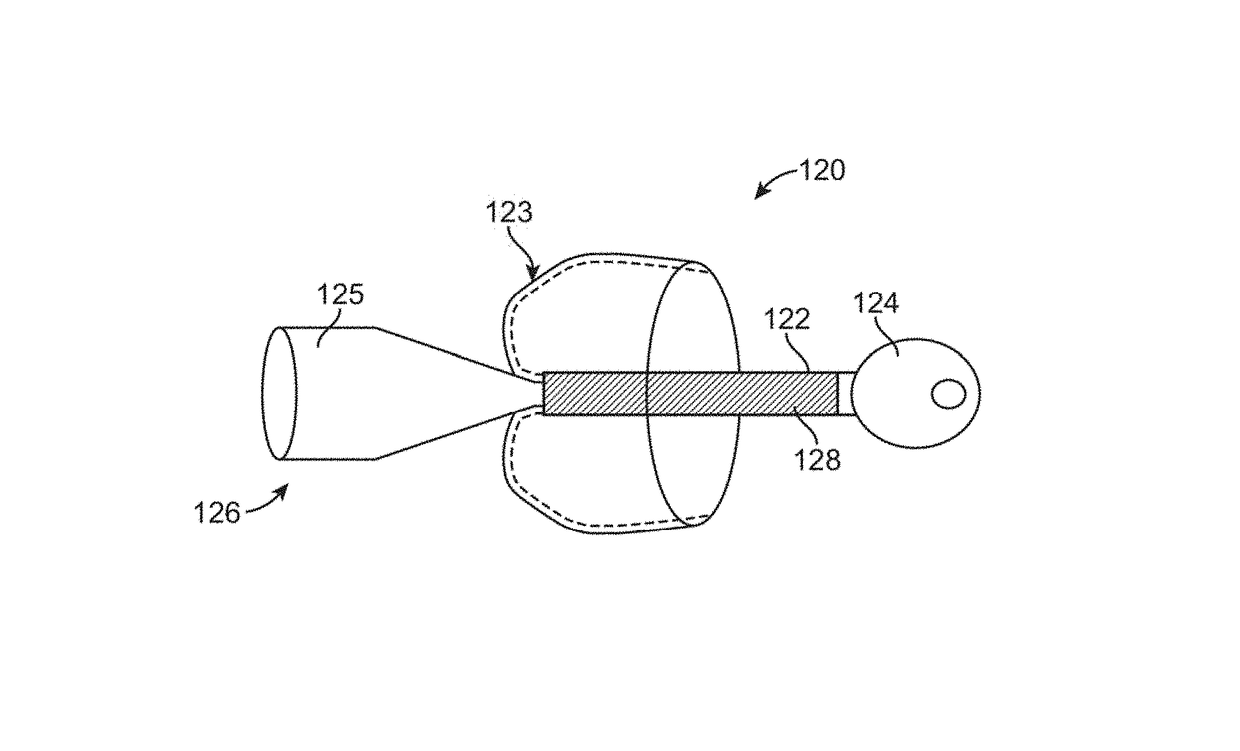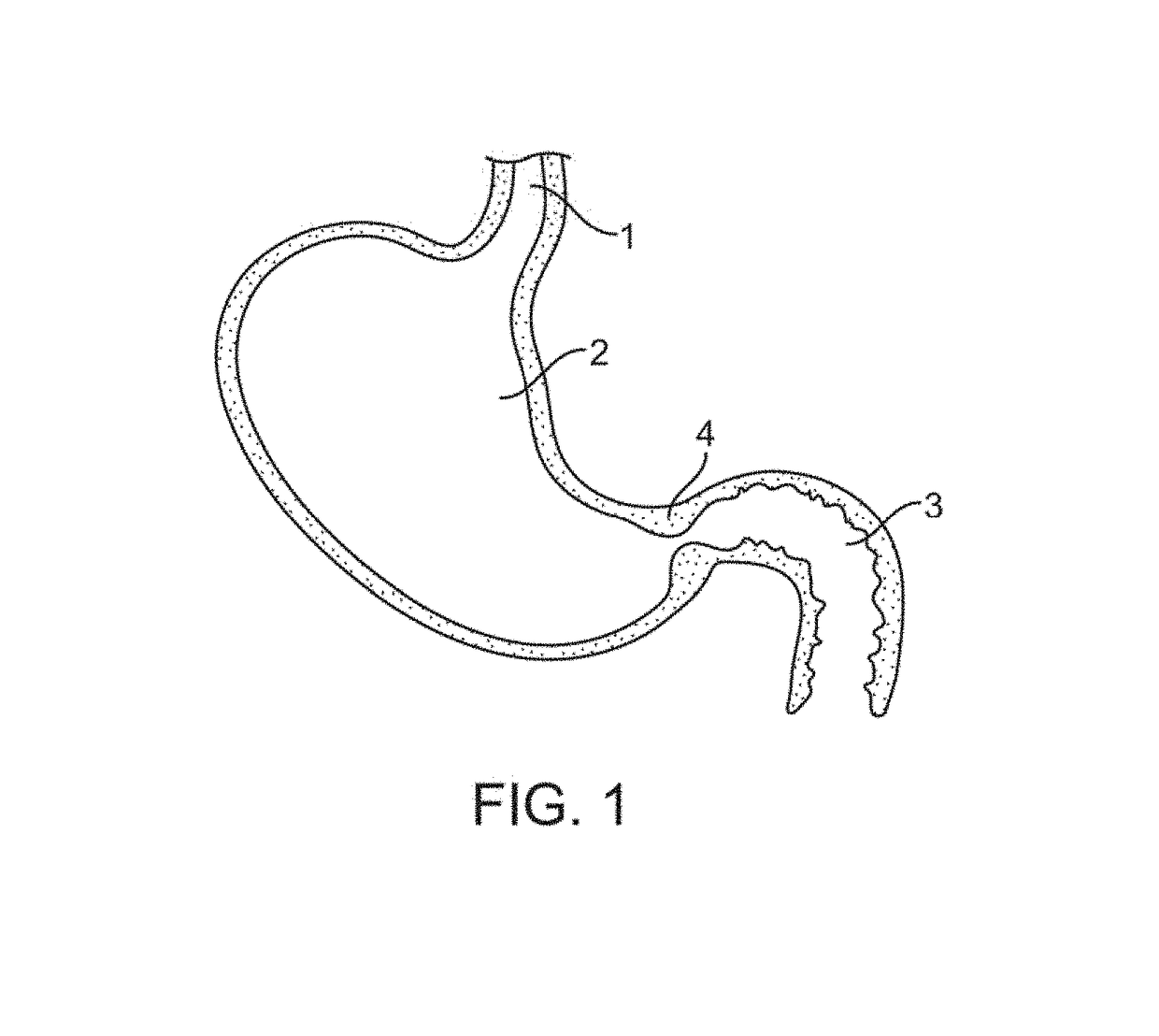Devices and methods for gastrointestinal stimulation
a technology of gastrointestinal stimulation and devices, applied in the field of medical devices and methods, can solve the problems of ineffective efforts to date, serious side effects of available medications, and obesity, and achieve the effect of facilitating or enhancing the performance of a function
- Summary
- Abstract
- Description
- Claims
- Application Information
AI Technical Summary
Benefits of technology
Problems solved by technology
Method used
Image
Examples
Embodiment Construction
[0056]The stimulation device of the present invention provides a mechanism that allows control of flow of materials through a pyloric valve and / or application of energy to portions of the gastrointestinal tract. The embodiments described below may be expandable between a contracted delivery configuration and an expanded, implanted configuration to ease implantation and / or removal. However it should be appreciated that embodiments may be adapted for placement via a surgical procedure involving an incision in the stomach wall, and thus the invention is not limited to an expanding device delivered through the esophagus. Thus, the description that follows is provided primarily for exemplary purposes, and no one embodiment should be interpreted to limit the scope of the invention as a whole.
[0057]Referring first to FIG. 1, an upper portion of the gastrointestinal tract includes the esophagus 1 that is in fluid communication with a proximal end of the stomach 2, and a duodenum 3 that is i...
PUM
 Login to View More
Login to View More Abstract
Description
Claims
Application Information
 Login to View More
Login to View More - R&D
- Intellectual Property
- Life Sciences
- Materials
- Tech Scout
- Unparalleled Data Quality
- Higher Quality Content
- 60% Fewer Hallucinations
Browse by: Latest US Patents, China's latest patents, Technical Efficacy Thesaurus, Application Domain, Technology Topic, Popular Technical Reports.
© 2025 PatSnap. All rights reserved.Legal|Privacy policy|Modern Slavery Act Transparency Statement|Sitemap|About US| Contact US: help@patsnap.com



